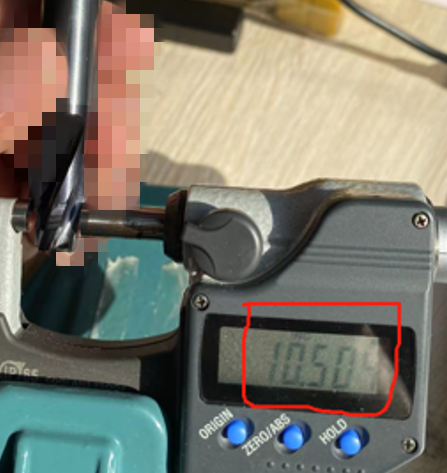In this issue, we will share with you an optimization case of a car oil pump reamer. This case truly demonstrates the professional strength of Novartis in solving complex machining problems. Through continuous technical support, Knowhy has successfully improved a series of problems faced by customers during the machining process of reamers, thereby enhancing overall machining efficiency and product quality.
Processing characteristics and difficulties of workpieces
The customer's product is an automotive oil pump, which encountered a series of processing difficulties during the manufacturing process
Requirements for high-precision aperture machining: It is necessary to achieve a tolerance accuracy of H7 level. The design of the reamer should be precisely controlled within the maximum allowable tolerance range, and the tool manufacturing tolerance should be strictly controlled within 3 microns to ensure wear resistance and longevity.
High smoothness requirement inside the hole: It is necessary to achieve a high smoothness standard of Ra1.6, which requires high wear resistance of the cutting edge of the tool.
Strict requirements for concentricity and positional accuracy: The concentricity and positional accuracy of the holes are very high, and the composite design of multiple short steps increases the difficulty of tool production.
Complex stepped hole design: including small angle bevel, R angle, C angle, and R to R angle, which greatly increases the difficulty of tool production.
The particularity of processing materials: The processing material is nickel containing stainless steel, which is difficult to process, and it is difficult to control cooling and thermal deformation during the processing.
Compensating for accumulated errors: Due to the possible unfavorable temperature conditions of machine tools and workshops, accumulated errors need to be compensated for through precise tolerances in tool design.
Taking into account these challenges, the design and manufacturing of cutting tools need to be carefully considered to ensure that they meet the high standard machining requirements of customers for automotive oil pump products.
Solution
In order to solve the problems encountered in the machining of automotive oil pump reamers, Nuo Erwei has taken a series of targeted solutions as follows:
Processing problem 1: The demand side temporarily modifies the workpiece drawing
Challenge: Due to changes in the drawing processing requirements, it is necessary to add a 10 degree angle and an R-joint angle to the stepped hole opening.
Solution: After in-depth discussions with the customer, the feasibility of modifying the drawings was confirmed to ensure that the cutting tools can meet the new design requirements.
Processing problem 2: Tool diameter and manufacturing process
Challenge: The cumulative tolerance for tool diameter production is only 3 microns, but the actual production exceeds 1 micron, resulting in machining holes exceeding the tolerance.
Solution: Fine tune the diameter of the tool drawing to adapt to the machining conditions.

Repair the original tool and continue testing.
Discuss and optimize the tool manufacturing process to improve the precision of tool manufacturing, reduce tool ovality, enhance tool symmetry, and minimize the issue of high and low cutting edges.
Analysis of tool diameter
Processing problem 3: Micro jumping of machine tool spindle
Challenge: Micro jumping of machine tool spindle affects machining accuracy.
Solution: Use flange handle and cylinder clamp to control tool runout, keeping it around 3 microns to compensate for spindle runout.
Processing problem 4: Tool breakage
Challenge: Tool edge breakage occurs during small batch processing.
Solution:
Adjust the processing parameters, control the clearance between the bottom surface of the reamer and the bottom surface of the previous process tool, and meet the cutting requirements as small as possible.
Adjust the machining program mode (switch from G85 to G81) to avoid excessive tool reaming time in the hole.
Optimize the cooling method of the cutting tool to ensure that the coolant reaches the cutting point directly.
Optimization results
Through Knowhy's professional tool management and technical optimization, the customer has achieved significant improvements in reamer machining:
Precision improvement: Achieve stricter aperture and surface roughness standards.
Efficiency improvement: Optimize processing programs, save time, and improve production efficiency.
Cost savings: Extended tool life, reduced replacement frequency and cost.
Production stability guarantee: Provides continuous technical support and services to customers, ensuring stability and continuity in the production process.
conclusion
Through these detailed analyses and optimization measures, Knowhy not only successfully solved various technical problems in the machining of automotive oil pump reamers, but also improved machining efficiency and product quality. This process reflects Knowhy's professional capabilities in tool management and technical services, as well as a deep understanding of customer needs. Through continuous technological deepening and refined process optimization, Knowhy is committed to providing customers with higher-level services to solve complex processing challenges.
▼
For more processing technology challenges, please feel free to contact us to discuss and exchange ideas together.


 +86 512 6938 3264
+86 512 6938 3264









